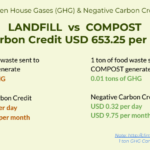Biodrying of Municipal Solid Waste: An Eco-Friendly Approach to Waste Management
Biodrying and Municipal Solid Waste
 Biodrying is a green waste management process that harnesses aerobic microbial activity to reduce moisture in municipal solid waste (MSW). By exposing organic waste to air, it promotes microbial decomposition, generating heat that dries the material. This energy-efficient method minimizes greenhouse gas emissions, decreases waste volume, and produces a stable, pathogen-free end product.
Biodrying is a green waste management process that harnesses aerobic microbial activity to reduce moisture in municipal solid waste (MSW). By exposing organic waste to air, it promotes microbial decomposition, generating heat that dries the material. This energy-efficient method minimizes greenhouse gas emissions, decreases waste volume, and produces a stable, pathogen-free end product.
Advanced technologies, such as forced aeration and rotary drum biodryers, optimize efficiency. Biodrying not only diverts waste from landfills but also facilitates resource recovery, transforming dried waste into solid recovered fuel or compost. It emerges as a sustainable solution, fostering a circular economy and environmental stewardship.
The Biodrying Process
1. Material Selection: Biodrying primarily focuses on biodegradable organic waste, such as food scraps, yard waste, and other compostable materials commonly found in MSW. This organic fraction is particularly susceptible to decomposition by microorganisms.
2. Aerobic Decomposition: Unlike traditional landfilling, which is an anaerobic process, biodrying relies on aerobic decomposition. This means that the waste is exposed to air, creating an environment conducive to the growth of aerobic microorganisms. These microorganisms break down the organic matter, releasing heat in the process.
3. Moisture Reduction: The key objective of biodrying is to reduce the moisture content of the waste. As microorganisms consume organic materials, they generate heat, which helps evaporate water from the waste matrix. This controlled drying process results in a significant reduction in moisture levels.
4. Temperature Control: Biodrying facilities carefully monitor and control the temperature within the waste pile. Elevated temperatures not only accelerate the drying process but also contribute to the elimination of pathogens and weed seeds. The optimal temperature range for biodrying is typically between 40 to 70 degrees Celsius.
Benefits of Biodrying
1. Energy Efficiency: The heat generated during the biodrying process can be harnessed and utilized for various purposes within the waste management facility, enhancing overall energy efficiency.
2. Reduced Greenhouse Gas Emissions: Compared to anaerobic decomposition in landfills, biodrying produces fewer greenhouse gas emissions. This is because aerobic decomposition generates carbon dioxide (CO2) rather than methane (CH4), which is a more potent greenhouse gas.
3. Volume Reduction: Biodrying significantly reduces the volume of waste by eliminating excess moisture. This not only optimizes landfill space but also minimizes transportation costs associated with waste disposal.
4. Pathogen and Odor Reduction: The elevated temperatures achieved during biodrying help eliminate harmful pathogens and reduce unpleasant odors associated with decomposing waste.
Challenges and Considerations
While biodrying presents numerous environmental advantages, it is essential to address potential challenges, such as the need for proper facility design, regular monitoring, and effective management of the dried waste product. Additionally, public awareness and acceptance are crucial factors in the successful implementation of biodrying as a municipal solid waste management strategy.
Conclusion
Biodrying of municipal solid waste stands as a promising and sustainable alternative to conventional waste management practices. By harnessing the power of natural processes, biodrying not only reduces environmental impact but also contributes to the development of a circular economy where waste is treated as a valuable resource rather than a burden. As communities strive to achieve more sustainable waste management solutions, biodrying emerges as a beacon of innovation in the quest for a cleaner and greener future.




